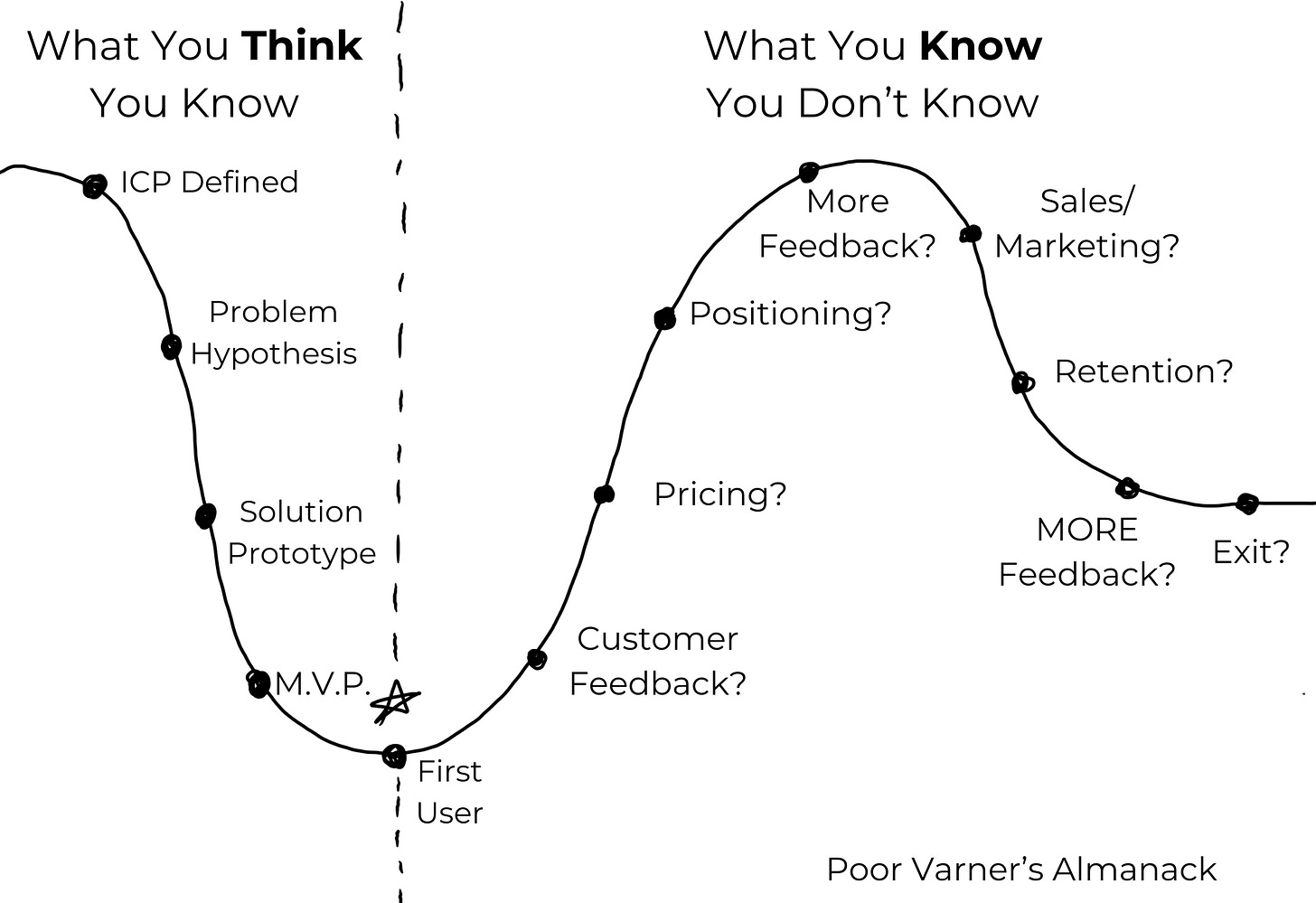When To Persist & When To Quit
Lessons from Scott Belsky, Behance, and their 6-year journey from bootstrapped side-hustle to $150 milion exit to Adobe.
Scott Belsky’s Story
In 2006, Scott Belsky founded Behance, a company with the mission of “organizing the creative world”. In December 2012, Behance was acquired by Adobe for $150 milion. But before its nine-figure exit, Behance had humble beginnings as a side hustle.
Belsky conceived Behance while working at Goldman Sachs after college. After enrolling at Harvard Business School, he was all-in on building the business, but continued to attend school full-time as an “insurance policy” in case things didn’t work out.1
Behance’s mission has always been “to organize the creative world.” To fulfill that mission, they experimented with various business models, finding creative ways to generate revenue:
Their first product was a line of paper notebooks for designers, to help them be more organized.
They also had a blog and conferences for creatives called 99U—founded on the idea that genius is “1% inspiration, and 99% perspiration.”
Belsky also wrote two books to generate revenue for the business—The Messy Middle and Making Ideas Happen.
With revenue from these lines of business, Behance had the runway to avoid taking on any outside capital for 5 years. When they finally took on investing, it was in a $6.5 million fundraising round. To sum up Scott Belsky’s strategy for building Behance:
He started with a clear mission: “to organize the creative world.”
Then, he found creative ways to generate revenue around that mission.2
Finally, he built the company slowly—at times ideating while working or attending school full-time, so that he had a back up plan if it failed.
Belsky’s entrepreneurial journey was difficult and filled with self-doubt, but he found a way to make it work. So, when should you push forward or call it quits?
When To Persist
Several years after the acquisition by Adobe, Scott Belsky joined Tim Ferriss on his podcast to speak about the experience. During the episode, Belsky compares the experience of building Behance to a quote from author Anne Lamott’s book “Bird By Bird”, a book about the writing process, which has many lessons applicable to business.
“You can see only as far as your headlights, but you can make the whole trip that way. You don't have to see where you're going, you don't have to see your destination or everything you will pass along the way. You just have to see two or three feet ahead of you.”3—Anne Lamott
The lesson is that when you’re driving at night, you can’t see far ahead, yet you still arrive at your destination. But you learn just enough at every step to keep moving forward.
The lesson from Belsky is that you can still get to your destination without seeing the whole road in from tof you. In his view, as long as what you learn along the way validates your original hypothesis, you must keep going.
“If you have as much, if not, more conviction in the problem you’re solving as time goes on, then you have to stick with it.
Conviction is knowing that the world is going to be a certain way in the future based on all the work, research, and experiences you have.
If, over time, you feel more conviction—even if the product is completely wrong, and you have to start all over again, you should stick with it.”4 — Scott Belsky
When To Quit
In the same discussion with Tim Ferriss about persisting with your business Scott Belsky shares how to know if you should quit.
“If you start to lose conviction in what initially set you on this [entrepreneurial] journey, that’s a serious thing. Conviction is knowing that the world is going to be a certain way in the future based on all the work, research, and experiences you have.
As you build your business, you learn more every day, and start to realize where you were right and wrong. You’re always a little bit wrong—that’s why you have to pursue product market fit.
If, and when, you realize your original hypothesis is outright wrong—you should quit.”—Scott Belsky
Put simply, the moment you know your original hypothesis for the business is wrong, you should quit.
Lessons Learned
Scott Belsky’s journey is a masterclass in strategic persistence. He built Behance while balancing a full-time job, bootstrapped it for years, and ultimately navigated an acquisition by Adobe. Along the way, he’s been candid about the realities of entrepreneurship—the uncertainty, the pivots, and the challenge of knowing when to push forward or walk away. His story underscores several fundamental truths:
Successful founders don’t persist blindly.
They refine their hypotheses along the way.
Winners quit when they realize their original vision is flawed.
But if conviction grows—if every lesson reinforces the belief that they’re solving the right problem—then quitting isn’t an option.
Belsky’s story is a valuable lens for any endeavor, whether launching a business, writing a book, or pursuing any long-term project. The key is knowing the difference between temporary obstacles and fundamental flaws.
If conviction fades, walk away. If it grows, double down.
—Grant
If you found this article valuable you may also like:
In an Acquired podcast episode, Scott mentions that since he was a full-time student at HBS, he had the opportunity to build the product slowly with his designer, without the pressure of needing early success as a result of jumping in full-time from the start.
Davidson, Ben, and David Rosenthal, hosts. "Behance (with Scott Belsky)." Acquired, Season 3, Episode 6, 1 Oct. 2018, https://www.acquired.fm/episodes/season-3-episode-6nbspbehance-with-scott-belsky.
With a mission-centric, medium agnostic approach, they were always serving the same customer, but in different ways. As they launched new lines of business, they never had to start from scratch because they always had a built in trust with a growing audience of creatives.
Anne Lamott, Bird by Bird: Some Instructions on Writing and Life (New York: Anchor, 1994).


